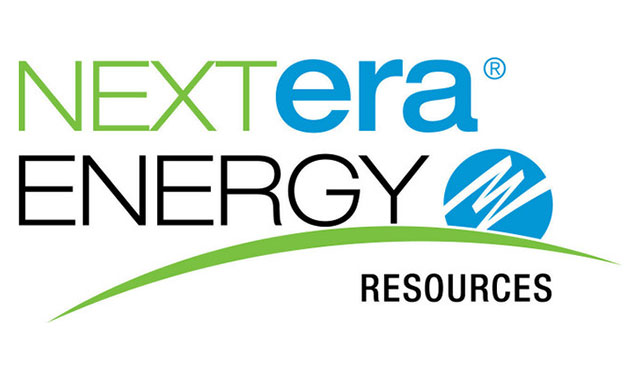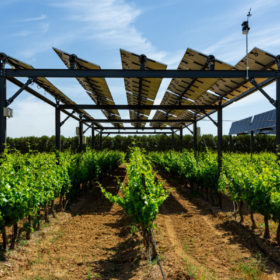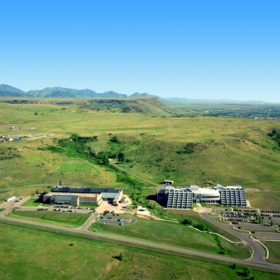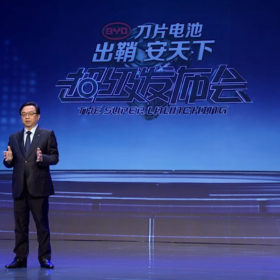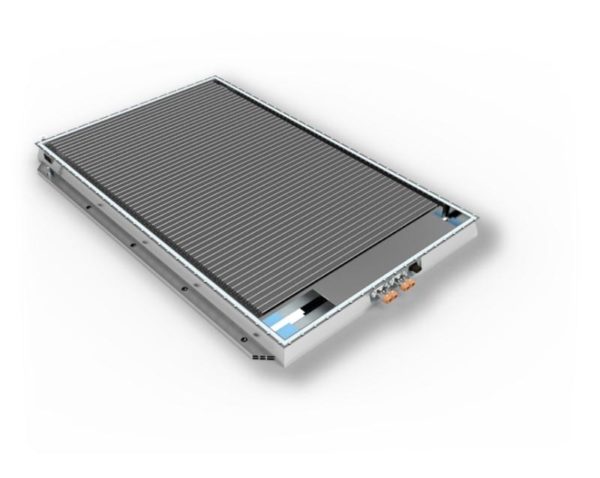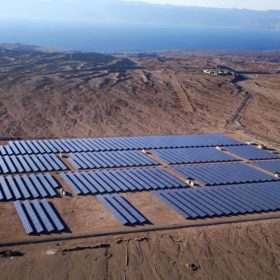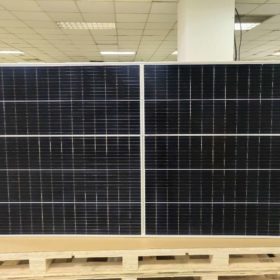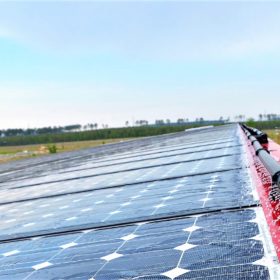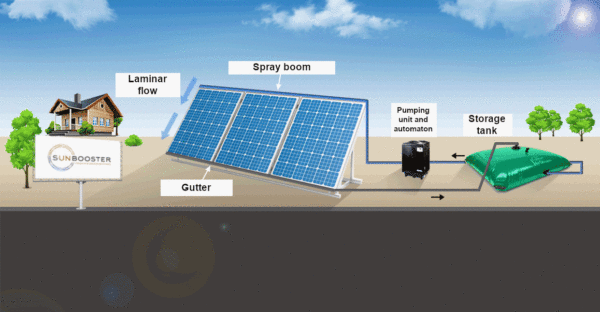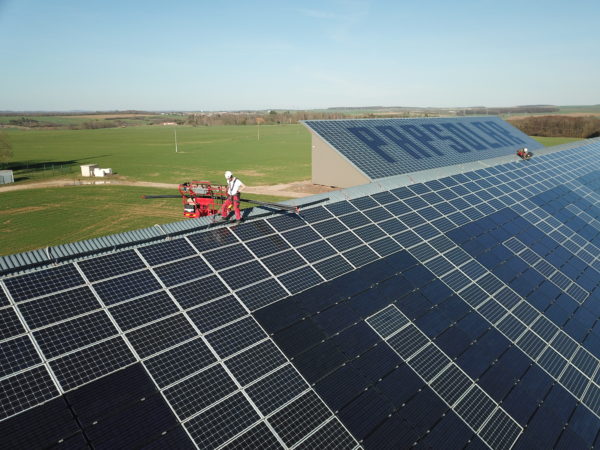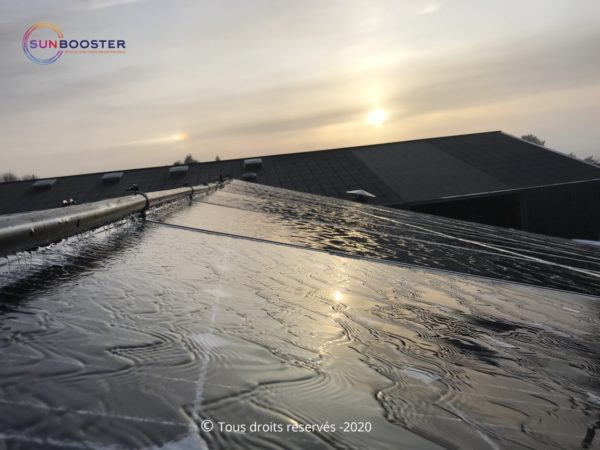
CPS inverter service techs now blanket the country. Photo: CPS.
The concept of offering operations and maintenance (O&M) to solar asset holders is not new. A host of O&M companies now provide soup-to-nuts service for commercial and utility-scale PV plants. But none of these service providers is also an inverter manufacturer, much less one that offers a 99 percent inverter performance guarantee under their service plan.
Enter Chint Power Systems America and its Flex Gateway. CPS has been testing its new inverter service model for the past year and is now rolling it out with plans to have 50 MW under contract this year, and 100 MW next year, according to Ed Heacox, the general manager of the company’s Americas division.
“We know there is a breakdown in the solar industry around inverter performance, warranty and service. The current paradigm for warranties is antiquated, but what we are doing with our services stack can be game-changing for customers,” Heacox says.
Indeed, unplanned solar plant repairs can cost owners up to $3,000 per megawatt each year (based on an average-sized solar power system of 50 MW), according to an October report from GTM Research. Overall, the solar industry will see $16 billion of unplanned repairs over the next five years, projects GTM’s Leila Garcia da Fonseca.
The CPS Promise:
With easy access to real, knowledgeable people, stocked parts, 24-hour RMA turnaround, and exceptional diagnostic hardware, CPS America is committed to full life-cycle service and support. Learn more here.
“We’re primarily offering service more to new projects; if the equipment is not ours, we are not offering service contracts,” Heacox notes. Still, there is an option for solar power plants that have inverters from one or more of the half dozen inverter suppliers now out of business. CPS provides repowering service in addition to its O&M activity, and also plans to offer battery storage later this year.
Growing ‘regional spokes’

Inverter analysis requires high-touch training. Photo: CPS
To serve the entire U.S. O&M inverter service market, CPS has established regional spokes for its Texas-based hub.
“We are investing in trained, action-oriented, customer-centric regional service technicians. They are equipped with vans, parts, tools and spare units for high speed resolutions. This field team has direct, easy-access relationships with customers,” explains Heacox. “We have 25 people doing service operations, which is a competitive weapon.”
In California, for example, the company has two roving field service techs driving stocked vans up to 5,000 miles per month. The company also has some return merchandise authorization infrastructure in Pomona, Calif., along with a tech team based in Pleasanton, Calif.
“The regional field team is backed by our Texas technical support hub and repair/analysis lab. This site is an RMA processing and analysis lab, with technicians and engineers. This also is our field dispatch center, technical support call hub and 24-hour, high-speed RMA logistics operation,” Heacox says.
Key feature: Flex Gateway
The latest version of the company’s Flex Gateway technology is key to the service offering.
“We’re very close to adding a 4G cellular feature that includes both website and mobile app access,” points out Heacox. “Flex offers two-way interactivity for data monitoring, diagnostics, remote control, reset, and firmware upgrades. The technology enables so much more than the old-school cliche of just monitoring; dynamic interactivity presents a whole new language.”
CPS found during its test period that the role of the customer is a “huge factor,” Heacox notes. “EPCs, smaller installers, other O&M service providers, owners, banks and utilities each have a different orientation and thus different interest levels. So we are offering our service to touch every level of role.
“Because we offer an uptime guarantee that a customer can trust, that provides the customer with a firm number to use in financial calculations, which can produce a better investment return number,” Heacox opines.
Size helps CPS provide its warranty and guarantee. Overall, CPS has 85,000 units in operation in the United States, with many of them installed for almost 10 years, he indicates.
“We’ve provided 3.5 GW in the U.S., and last year we shipped just under 1 GW,” he adds.
The company boasts that it is No. 1 in the C&I solar inverter market, and has a 30 percent share of the market for all segments combined. CPS is also a subsidiary of an $8 billion publicly-traded company in China, which provides the financial wherewithal for inverter warranties.
This is just the start
The market for solar O&M service is booming. Annual solar plant O&M costs will double from nearly $4.5 billion in 2019 to over $9 billion in 2024, according to GTM.
“Process automation can help the industry optimize technician time in the field, as well as other areas,” GTM suggests. “Technician efficiency is already rising, as measured by how many megawatts of solar capacity can be served by a single technician, and that trend is expected to continue. Technicians used to be able to service only 20 megawatts of solar capacity. Now it’s possible for a single technician to serve 40 to 60 megawatts — more than doubling their efficiency in some cases.”
Does CPS worry that turn-key O&M service providers will knock off its inverter service?
“No,” says Heacox. “Instead, we think that the turn-key providers will look to us for our part in their overall service, so we won’t really compete. We are now building a network of O&M firms and training them virtually, and have plans for hands-on training in Texas, starting this year.”
Charles W. Thurston is a contributor to Solar Builder magazine, covering the solar industry from Northern California.
-- Solar Builder magazine
Lắp đặt điện mặt trời Khải Minh Tech
https://ift.tt/2X7bF6x
0906633505
info.khaiminhtech@gmail.com
80/39 Trần Quang Diệu, Phường 14, Quận 3
Lắp đặt điện mặt trời Khải Minh Tech
https://ift.tt/2ZH4TRU
